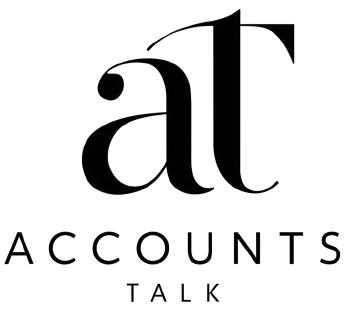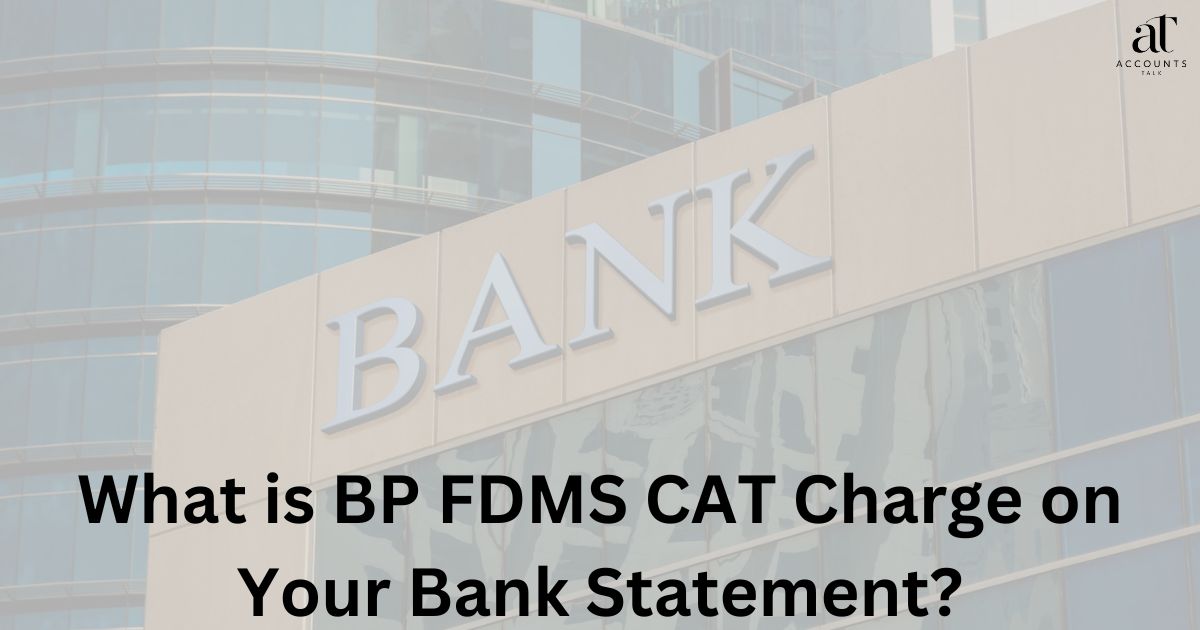Have you ever squinted at your bank statement, puzzled by a mysterious entry labeled “BP FDMS CAT“? You’re not alone. This cryptic charge often leaves many Americans scratching their heads, wondering if they’ve fallen victim to some sneaky financial feline.
Fear not! We’re about to embark on a journey to demystify this common yet confusing charge, helping you become a savvier consumer in the process.
What is the BP FDMS CAT charge on your bank statement?
Let’s break down this alphabet soup:
- BP: British Petroleum, the well-known gas station chain
- FDMS: First Data Merchant Services, a company that processes credit card transactions
- CAT: Customer Activated Terminal, fancy jargon for the card reader at the pump
In essence, a BP FDMS CAT charge is what appears on your bank statement when you use your credit or debit card to pay for gas at a BP station. It’s not some mysterious fee; it’s simply how your gas purchase is labeled in the digital world of banking.
“Knowledge is power. Understanding your bank statement is the first step towards financial literacy.” – Anonymous Financial Advisor
Why BP FDMS CAT charges appear on your bank statement
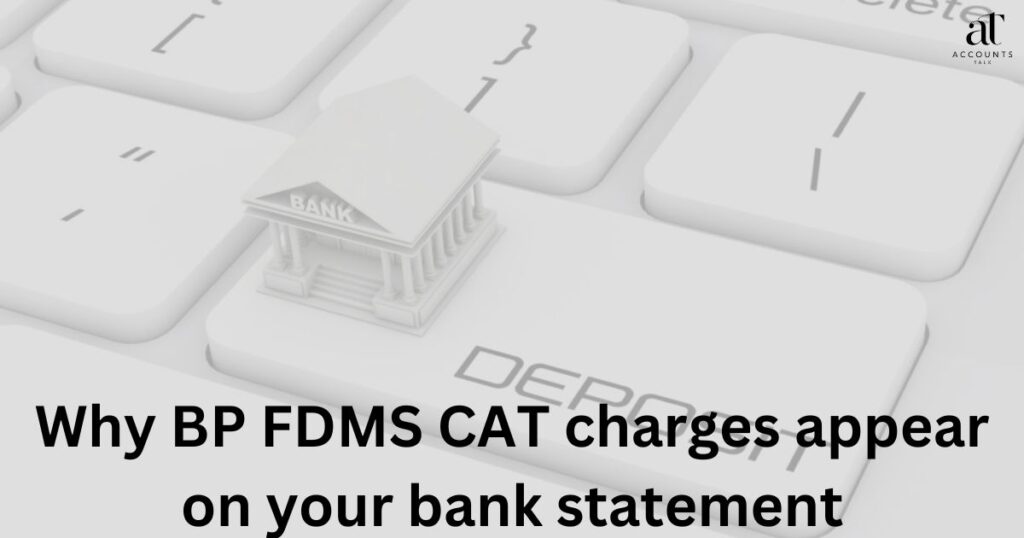
Imagine you’re on a road trip, cruising down the highway when your gas gauge starts flirting with “E“. You pull into a BP station, swipe your card, and fill up your tank. Here’s what happens behind the scenes:
- You swipe your card at the pump (the CAT)
- FDMS springs into action, verifying your card and processing the transaction
- Your bank authorizes the payment
- BP gets paid, and you drive off with a full tank
This entire process, from swipe to payment, is what the BP FDMS CAT charge represents on your statement. It’s like a digital receipt, showing you’ve made a purchase at a BP gas station using their card processing system.
More Post: What is DNCSS St Louis BB Con? Unraveling the Mystery Charge on Your Credit Card
Components of BP FDMS CAT Charge
The BP FDMS CAT charge isn’t just a single fee. It’s a combination of several components that make up the total amount you see on your statement. Let’s break it down:
Processing Fees
This is the cost of convenience. When you use your card instead of cash, there’s a whole digital infrastructure working to make that transaction happen seamlessly. The processing fee covers the cost of this service.
Interchange Fees
Think of this as the toll on the highway of digital transactions. When you use your card, your bank (the card issuer) charges a small fee to BP’s bank for the privilege of accepting your payment. This fee varies depending on factors like the type of card you use (credit vs. debit, rewards vs. non-rewards).
Equipment Rental Fees
Those card readers at the pump don’t grow on trees! BP has to pay for the equipment that allows you to swipe your card and pump your gas without ever setting foot inside the store. Part of your charge goes towards covering these costs.
Service Charges
This component covers additional services provided by FDMS, such as:
- Customer support (for when things go wrong)
- Software updates (to keep the system running smoothly)
- Fraud prevention tools (to protect you and BP from unauthorized transactions)
Here’s a breakdown of how these components might look in a typical BP FDMS CAT charge:
ComponentPercentage of Total ChargeProcessing Fees40%Interchange Fees30%Equipment Rental20%Service Charges10%
Note: These percentages are illustrative and may vary in actual transactions.
How does the BP FDMS CAT charge appear on your bank statement?
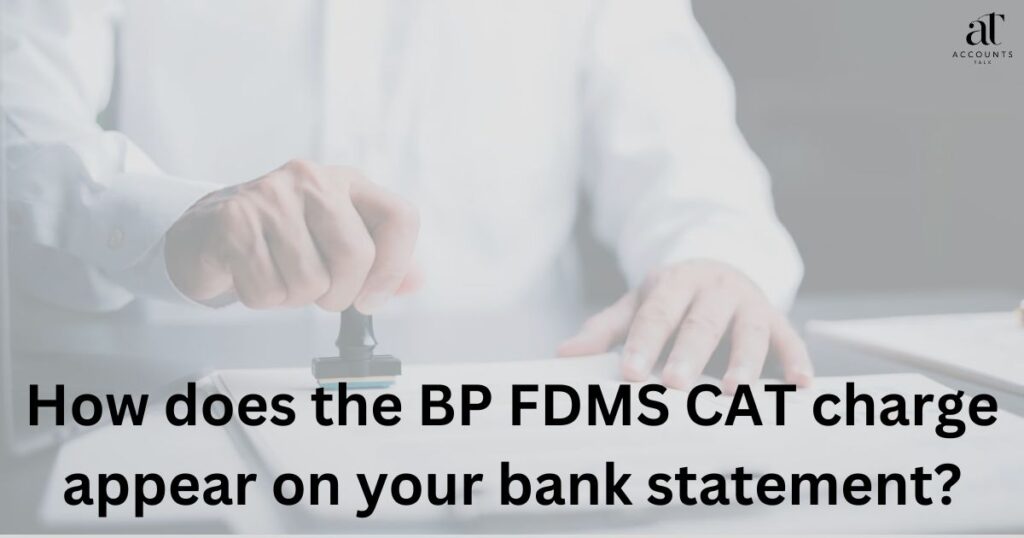
Now, here’s where things can get tricky. The BP FDMS CAT charge doesn’t always show up with the same name on your statement. It’s like a financial chameleon, taking on different forms depending on various factors. Here are some common variations you might see:
- BP FDMS CAT
- GA BP FDMS CAT
- BP-FDMS-CAT
- BP FDMS CAT Warrenville
- BP FDMS CAT, AUSTELL, GA
- PURCHASE BP FDMS CAT WARRENVILLE
The location (like Warrenville or Austell, GA) often appears as part of the charge description, indicating where you made the purchase.
Pro Tip: If you see a charge like this and you recently filled up at a BP station, it’s likely legitimate. However, if something looks off, don’t hesitate to contact your bank for clarification.
Case Study: The Curious Case of the Confusing Charge
Meet Sarah, a diligent budgeter from Sanford, NC. One day, she noticed a charge on her statement: “BP FDMS CAT Sanford, NC“. Sarah hadn’t been to a BP station recently, so she panicked, thinking her card had been compromised.
After calling her bank, Sarah learned that the charge was actually from a gas purchase she’d made two weeks prior. The delay in processing and the unfamiliar description had thrown her off. This experience taught Sarah the importance of:
- Keeping track of all purchases, even small ones like gas
- Understanding the various ways charges can appear on statements
- Not panicking, but investigating unusual charges calmly
What to do if you don’t recognize a BP FDMS CAT charge
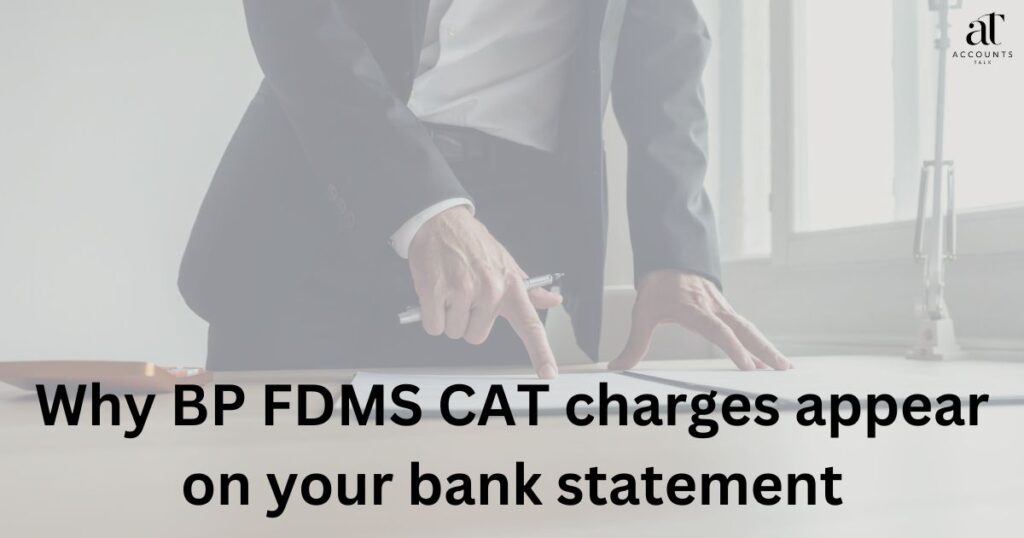
If you spot a BP FDMS CAT charge that you don’t recognize, don’t panic. Follow these steps:
- Check your receipts: Did you recently buy gas at a BP station?
- Look at the date: Remember, sometimes charges can take a few days to appear.
- Verify the location: Does the location in the charge description match where you’ve been recently?
- Contact your bank: If you’re still unsure, reach out to your bank for clarification.
- Report suspicious activity: If you confirm that the charge is fraudulent, report it to your bank immediately.
Alternatives to avoid BP FDMS CAT charges
If you’d prefer not to see these charges on your statement, you have a few options:
- Pay cash: The old-school method. No card, no charge.
- Use a BP-specific payment method: Some gas stations offer their own payment apps or cards that might process differently.
- Choose another gas station: If you’re really averse to these charges, you could always fill up elsewhere.
However, keep in mind that most gas stations will have similar charges, even if they’re labeled differently. The convenience of paying at the pump usually comes with some form of processing fee.
Conclusion
Understanding the BP FDMS CAT charge is more than just decoding a cryptic line on your bank statement. It’s about being an informed consumer, aware of how your everyday transactions are processed and recorded. While it might seem complex at first glance, it’s simply the digital footprint of your gas purchase at a BP station.
Remember:
- BP FDMS CAT charges are normal for BP gas station purchases
- The charge may appear under various names, often including location information
- If in doubt, check your receipts or contact your bank
By staying informed and vigilant, you can navigate the world of digital transactions with confidence, ensuring that every charge on your statement is accounted for. After all, knowledge is power, especially when it comes to your finances!
FAQs
What is FDMS payment on bank statement?
FDMS payment refers to a transaction processed by First Data Merchant Services. It’s commonly associated with credit or debit card purchases at various merchants, not just BP gas stations.
Q: What is BP on a bank statement?
BP on a bank statement typically refers to a purchase made at a British Petroleum (BP) gas station. It could be for fuel, car wash, or convenience store items.
Q: What is a bank charge on a bank statement?
A bank charge on a statement can refer to various fees imposed by your bank, such as monthly account maintenance fees, overdraft charges, or ATM fees. It’s distinct from merchant charges like the BP FDMS CAT charge.
Q: What is the POS fee on my bank statement?
POS stands for Point of Sale. A POS fee on your bank statement typically refers to a charge incurred when using your debit card to make a purchase. It’s similar to the BP FDMS CAT charge but can apply to any merchant transaction, not just gas stations.
Remember, staying informed about your financial transactions is key to maintaining a healthy bank account and detecting any potential fraudulent activity early. Don’t hesitate to reach out to your bank if you have any questions about charges on your statement. They’re there to help you navigate the sometimes confusing world of personal finance.
More Post:

Mia Hazel is a finance expert and the author behind insightful content that simplifies complex financial concepts. With a passion for empowering readers to make informed financial decisions, Mia breaks down everything from budgeting to investments with clarity and precision.
Her work is dedicated to helping individuals navigate the financial world with confidence and achieve their financial goals. Follow her for practical tips and advice on all things finance.
